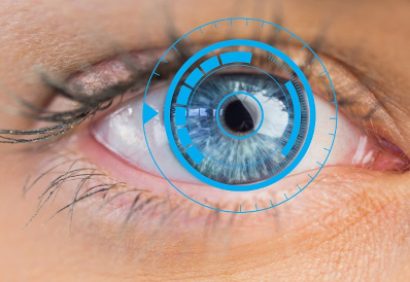Jump To:
Fast Facts
- Operation Duration: 20-40 Minutes
- Hospital Stay: NO
- Approximate Length Of Stay: 1 Week
- Improve Vision: After 1 Day Up To 3 Month

Glasses Removal Procedures
“Glass Removal Procedures”, commonly known as “Refractive Surgery”, aim to correct vision problems like “Myopia” (nearsightedness), “Hyperopia” (farsightedness), and “Astigmatism”.
Here are the main types of refractive surgeries along with a brief description of each:
Types of Refractive Surgery
1. LASIK (Laser-Assisted In Situ Keratomileusis)
- Description: A thin flap is created on the cornea, lifted, and then a laser reshapes the underlying corneal tissue to correct the refractive error.
- Advantages: Quick recovery time, minimal pain, and rapid improvement in vision.
- Disadvantages: Potential for dry eyes, halos, and glare around lights.
2. PRK (Photorefractive Keratectomy)
- Description: The outer layer of the cornea (epithelium) is removed, and a laser reshapes the underlying corneal tissue. The epithelium naturally regenerates over time.
- Advantages: Suitable for patients with thin corneas or those who engage in contact sports.
- Disadvantages: Longer recovery time and more discomfort compared to LASIK.
3. LASEK (Laser Epithelial Keratomileusis)
- Description: Similar to PRK, but the epithelium is preserved and moved aside during surgery, then replaced after the laser reshapes the cornea.
- Advantages: Suitable for patients with thin corneas or those at risk of trauma to the eye.
- Disadvantages: Longer healing time and more post-operative discomfort compared to LASIK.
4. SMILE (Small Incision Lenticule Extraction)
- Description: A laser is used to create a small, lens-shaped piece of tissue (lenticule) within the cornea, which is then removed through a small incision.
- Advantages: Minimally invasive, less risk of dry eyes, and faster recovery.
- Disadvantages: Limited to correcting myopia and mild astigmatism.
5. ICL (Implantable Collamer Lens)
- Description: A synthetic lens is implanted inside the eye between the iris and the natural lens, without removing any corneal tissue.
- Advantages: Suitable for high degrees of myopia, thin corneas, and those unsuitable for laser procedures.
- Disadvantages: Invasive procedure with risks such as infection, cataracts, and increased eye pressure.
Conclusion
Choosing the right procedure depends on various factors, including the type and severity of the refractive error, corneal thickness, lifestyle, and overall eye health. A thorough consultation with an experienced ophthalmologist is essential to determine the most appropriate surgical option for your specific needs. These procedures can significantly improve quality of life by reducing or eliminating dependence on glasses or contact lenses. SHIFA accompanies you step by step to achieve the best result of your eye surgery.
Compare Before and After Images


Glasses Removal Procedures
Frequently Asked
Questions
How painful is Laser Eye Surgery?
Laser Eye Surgery is typically not painful, as it is performed under local anesthesia. The surgeon may use numbing eye drops to ensure a comfortable experience during the procedure. Some individuals may feel slight pressure or mild discomfort during certain steps of the surgery, but it is generally well-tolerated.
Can Laser Eye Surgery go wrong?
While laser eye surgery is generally safe and has a high success rate, there is a small
risk of complications or less-than-optimal outcomes. Adverse outcomes can occur in a small percentage of cases, estimated at around 1 in 500 people. Complications can include dry eyes, glare, halos, double vision, under-correction or overcorrection of sight, and infection or flap complications in rare cases.
Does LASIK last forever?
“LASIK” (Laser-Assisted in Situ Keratomileusis) is a permanent procedure that aims to correct refractive errors and reduce or eliminate the need for glasses or contact lenses. While the procedure itself is considered permanent, it’s important to note that the effects of aging and other factors can still impact vision over time.
Who is not suitable for Laser Eye Surgery?
Laser Eye Surgery may not be suitable for everyone. Individuals with severe refractive errors, such as extremely high or unstable prescriptions, may not be suitable candidates. Additionally, people with certain eye diseases or conditions like glaucoma, cataracts, corneal diseases, or severe dry eye may be ineligible for laser eye surgery.
Why choose SHIFA for Eye Surgery?
SHIFA Eye Center is equipped with cutting-edge medical technologies that are on par with developed countries. The cleanliness and staff professionalism of Iranian clinics and hospitals are also exceptional. Iran offers the most affordable eye treatments in comparison with other countries.
SHIFA's Departments
Related Services
Featured Services

Beard Transplant
A “Beard Transplant” is a cosmetic procedure in which hair follicles are harvested from one part of the body (usually

Restorative and Cosmetic Dentistry
“Restorative and Cosmetic Dentistry” are two branches of dental care that focus on improving the appearance, function, and overall health

Gynecomastia Surgery
“Gynecomastia Surgery”, also known as “Male Breast Reduction”, is a surgical procedure designed to reduce the size of enlarged male

Eye Deflection Surgery
Deflection of the eye, often referred to as “Strabismus”, is a condition where the eyes do not properly align with
Our Blog Articles
- mehdi.mhj@gmail.com
5 Great reasons to use an online doctor to choose
Delve into the impact of digital life on mental health & discover practical strategies to...
Read More- mehdi.mhj@gmail.com
Doccure – Making your clinic painless visit?
Explore the benefits & challenges of virtual healthcare appointments, along with tips for making good...
Read More- mehdi.mhj@gmail.com
What are the benefits of online doctor booking
Explore importance of quality sleep & learn tips to improve your sleep, ensuring raise-up refreshed...
Read More- mehdi.mhj@gmail.com
Benefits of Consulting With an Online Doctor
Uncover strategies to achieve a harmonious balance between professional and personal well-being....
Read More





Comments are closed.